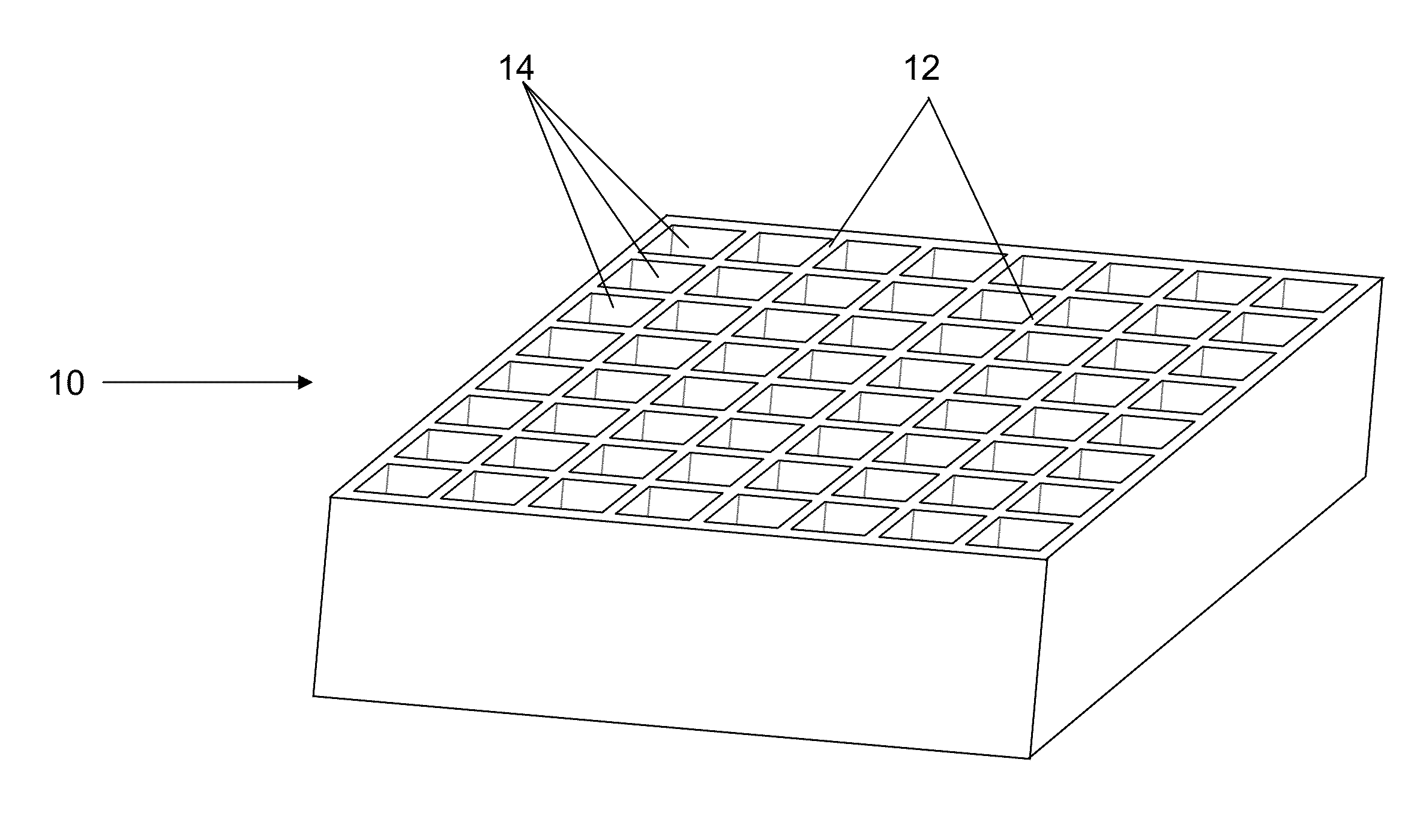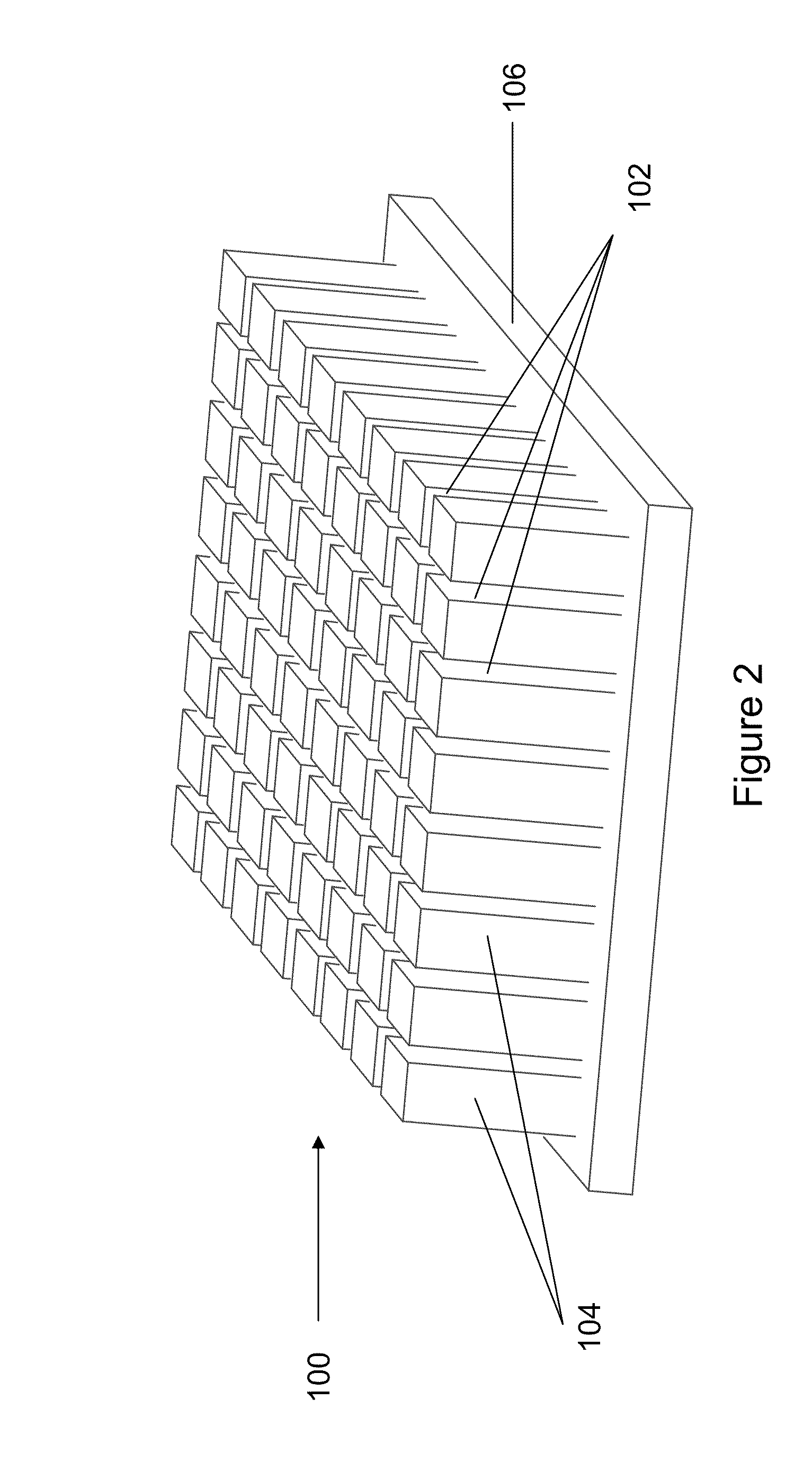Scintillator array and a method of constructing the same
a scintillator array and array technology, applied in the field of ionizing radiation imaging sensors, can solve the problems of reducing spatial sensitivity, deteriorating fold image effect, and light traveling, and achieve the effect of improving scintillator arrays
- Summary
- Abstract
- Description
- Claims
- Application Information
AI Technical Summary
Benefits of technology
Problems solved by technology
Method used
Image
Examples
Embodiment Construction
[0076]The present invention provides a new method for manufacturing a pixelated scintillator at a high pitch and a high fill factor, stopping power, and efficiency.
[0077]The present invention provides means of optimizing the method for maximal light output and minimal dissipation of light between adjacent pixels.
[0078]In addition, it is provided means of using this approach to provide improved scatter-radiation rejection at the detector entrance, as either an integral part of the scintillator or an additional assembly.
[0079]A pixelated scintillator is necessary for both improving spatial imaging resolution and increasing light output per pixel. And yet, pixelated scintillators and methods for producing them are available for pixel sizes that are inadequate for high resolution X-ray imaging. For example, scintillator pixels used in Computed Tomography (CT) are typically 1 mm in size. The methods for making such pixels are not suitable for higher resolution imaging, since the relative...
PUM
 Login to View More
Login to View More Abstract
Description
Claims
Application Information
 Login to View More
Login to View More - R&D
- Intellectual Property
- Life Sciences
- Materials
- Tech Scout
- Unparalleled Data Quality
- Higher Quality Content
- 60% Fewer Hallucinations
Browse by: Latest US Patents, China's latest patents, Technical Efficacy Thesaurus, Application Domain, Technology Topic, Popular Technical Reports.
© 2025 PatSnap. All rights reserved.Legal|Privacy policy|Modern Slavery Act Transparency Statement|Sitemap|About US| Contact US: help@patsnap.com



